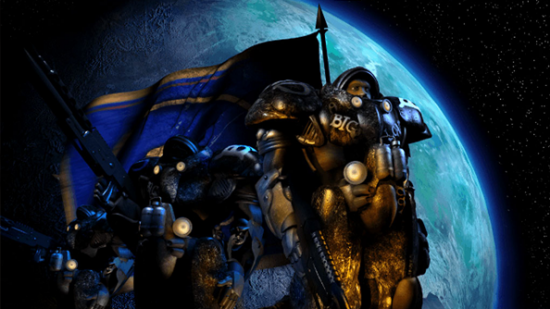Two Edinburgh research astronomers have used the outcomes of PvP matches in StarCraft to develop models for interstellar colonisation of the Koprulu Sector. Their discovery? Despite the “deliberate in-built balance” between civilisations, the Terrans would eventually succeed in conquering their rival races thanks to “a strategy of early pressure against their opponents”.
The research paper comes as part of a public outreach project to increase understanding of scientific numerical modelling. It transpires that although StarCraft’s data is entirely fictitious, player strategies provide an “excellent test case” for the development of numerical models.
The two astonomers, Thomas Targett and Duncan Forgan, watched through 500 replays of online PvP matches, pulling data from the videos which they then fed into a “Percolation model” which, asTargett explained to Jeremy earlier today, “can be used to model the percolation of one thing into another, such as in this case civilisations into the galaxy, but also things like bacteria into a petri dish, or water moving around objects in a river.”
The study discovered that, despite all the work Blizzard have put into balancing the three sides in StarCraft 2, if the Terrans pursued “a strategy of early pressure against their opponents” they “would eventually conquer their Zerg and Protoss adversaries.”
The main aim of this study was “try to get people involved and thinking about the scientific method, by using something they might be familiar with” and unfortunately can’t be used to form an inter-galactic alien colonisation project, what with the data being derived from a fictional source.
This Terran advantage may be short lived, though, as Targett told Jeremy that with the release of Heart of the Swarm will meantheir model will no longer reflect the state of the game, “we could only invest so much time in gathering data from the online replays, the outcomes in our model reflect the time from which the data was taken. A change like [Heart of the Swarm] will really take a long time to full re-balance to the levels seen towards the end of Wings of Liberty.”
When asked, as this study has no application, why he conducted the study, Targett told us “I’m simply trying to highlight one fun thing that can be done to hopefully get people thinking more about science. My hope is that a project like this might spark an idea in someone, who eventually might develop things further, and that’s how science works, ideas building upon ideas over time.”
The full paper can be read over at the team’s project page.
